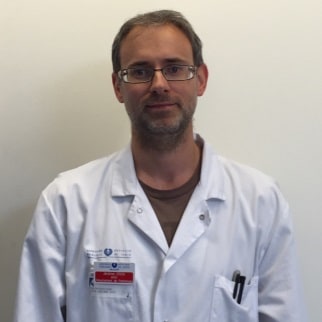Description
Cros and his team will use high-throughput analyses to assess the heterogeneity of pancreatic NETs by studying multiple areas of tumors or multiple samples from the same patients collected over the course of their disease. This approach may shed light on the dynamics of pNETs and point to potential new therapeutic targets.
What question will the researchers try to answer?
Multiomics studies have described the molecular landscape of low, intermediate and aggressive pNETs but it remains unclear whether they represent different diseases or a different “stage” of the disease. In the later scenario, the succession of events driving tumor progression is unknown. In addition, tumor progression may be observed after several lines of treatment, suggesting that they may select aggressive tumor clones. However, it is hard to predict such an event and the molecular events behind it are unknown. In this project my team and I aim to assess the extent of pNET intratumor heterogeneity and understand the molecular events leading to aggressive tumors. We will also explore the phenomenon of hyper-progression upon temozolomide treatment and whether we can predict it.
Why is this important?
PNETs are primarily treated according to their clinical stage and proliferation grade. Large-omics studies have demonstrated that pNETs are heterogeneous diseases, especially at the molecular level. We believe that understanding the molecular lifespan of a pNET will allow for treatments to be adapted and, most importantly, may highlight key “checkpoints” during disease progression that can be targeted. With respect to tumor progression after temozolomide treatment, studies on glioblastomas have suggested that this temozolomide-induced progression is associated in a cases where the DNA mismatch repair system is impaired, leading to an hyper-mutator phenotype. If a similar mechanism is present in pNETs, it may represent a strong rationale for the use of immunotherapy. In addition, we hope to discover biomarkers that may predict temozolomide-induced progression.
What will researchers do?
In the first part of the project, we will assess native intratumor heterogeneity in well differentiated pNETs. Specifically, we will study multiples areas of highly heterogeneous tumor to understand the key steps of tumor progression. We will compare the genomic and epigenomic landscape of matched primary tumor and metastases to understand tumor progression at the metastatic level and perform single-cell analyses of selected pNETs. In the second part of the project, we will assess the temozolomide-induced clonal selection in pNETs by comparing the genomic landscape of matched tumors in patients before and after treatment with temozolomide. This will help us understand the molecular mechanism behind this phenomenon and whether it can open therapeutic avenues.
How might this improve the treatment of NETs?
Understanding the molecular milestones during pNET progression will highlight key molecules and pathways that may be targeted. This “road map” will better define for patients the “molecular stage” of their disease, helping doctors to adapt treatments and monitor their patients’ disease. If a similar mechanism to glioblastoma of temozolomide-induced hypermutation and hyper-progression is proven, it could lead the way to more effective immunotherapy. In addition, this may suggest that temozolomide is a potent companion for immunotherapy in pNET that has so far been mostly ineffective.
What is the next step?
After the current project, we will validate the role of these key “checkpoints” in vitro in organoids and in vivo in mouse models. We also plan to assess the potency of inhibitors of these key “checkpoints.” Finally, depending on our results of the temozolomide study, we may propose a clinical trial associating temozolomide and immunotherapy in selected patients.

